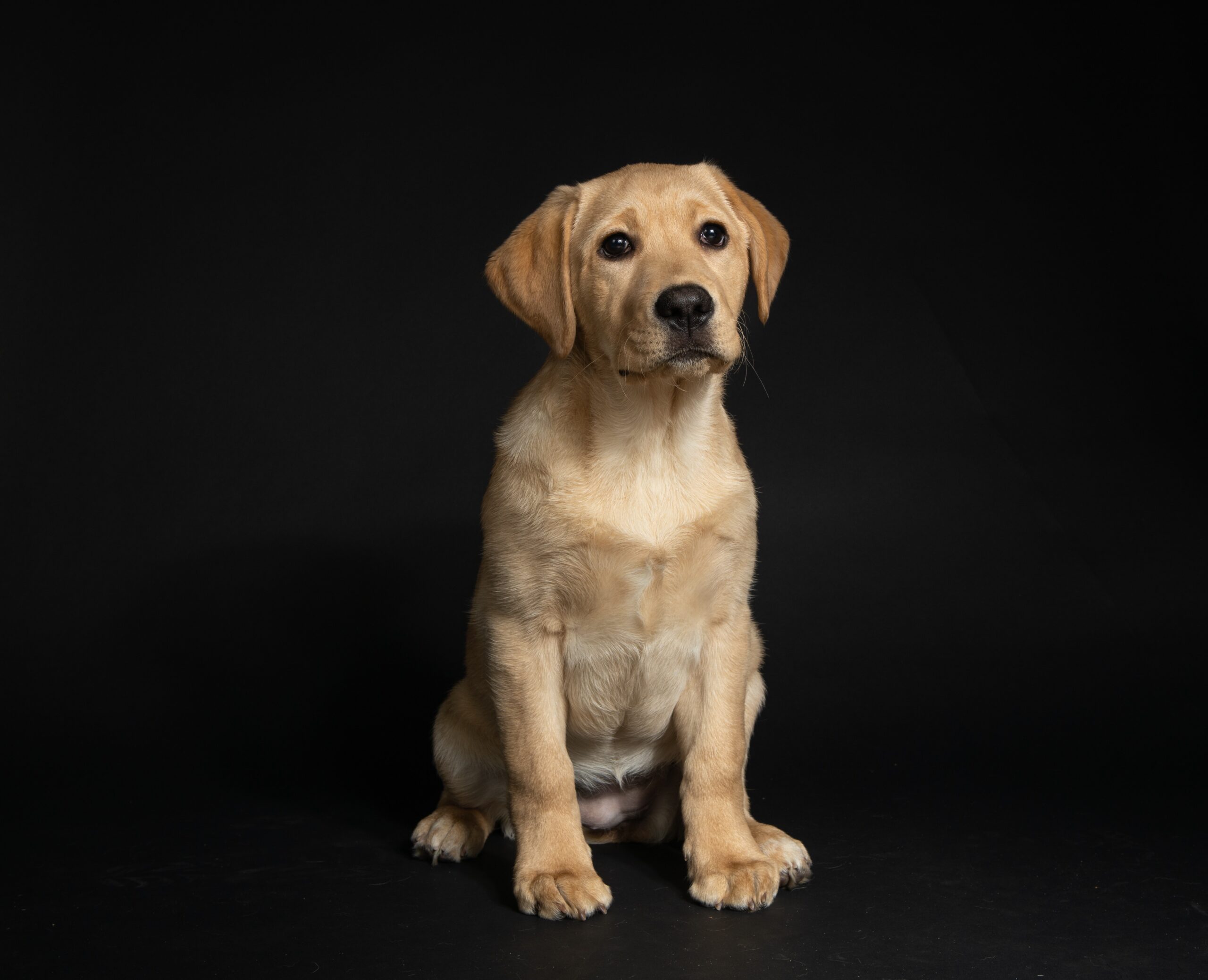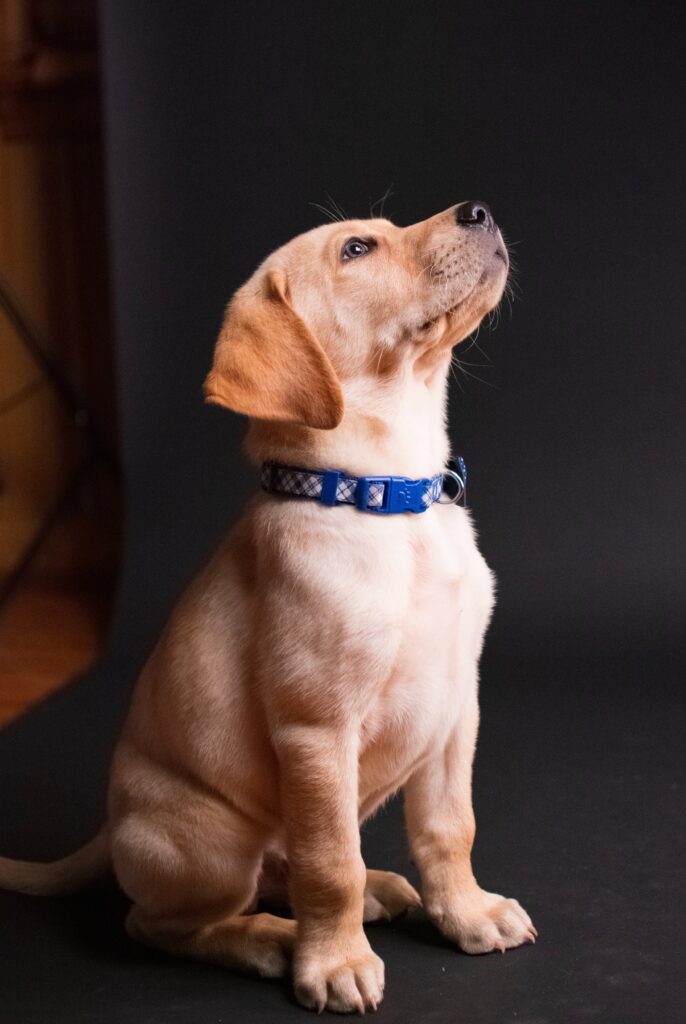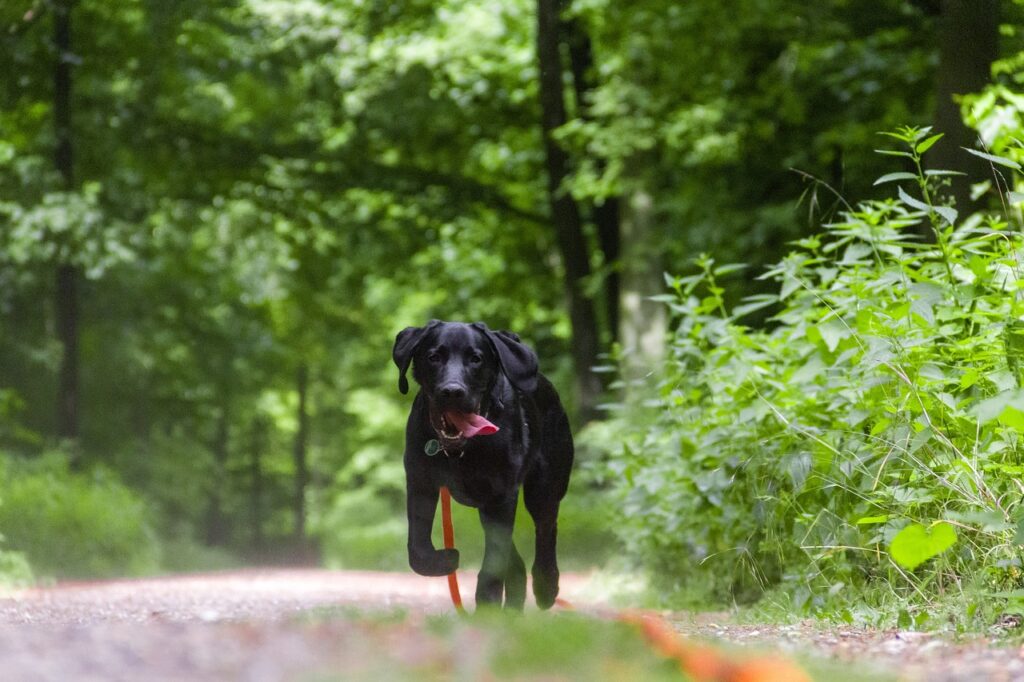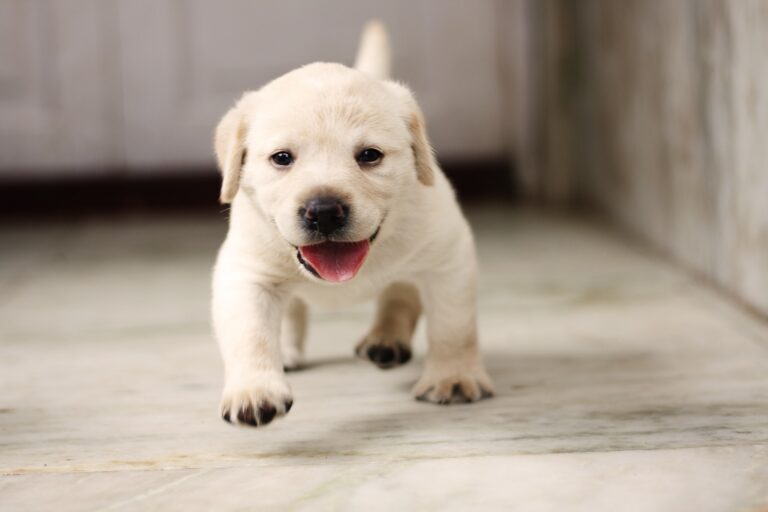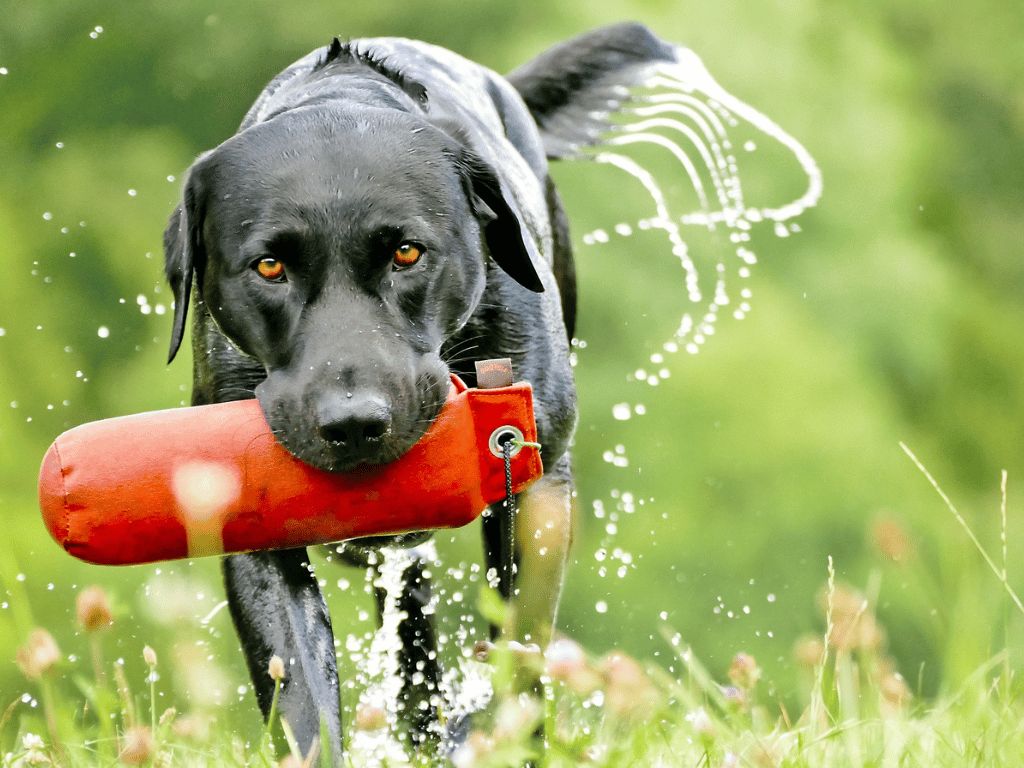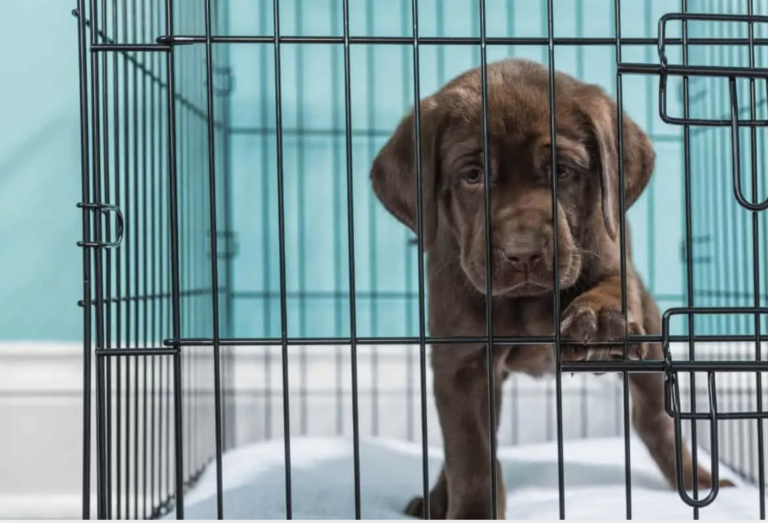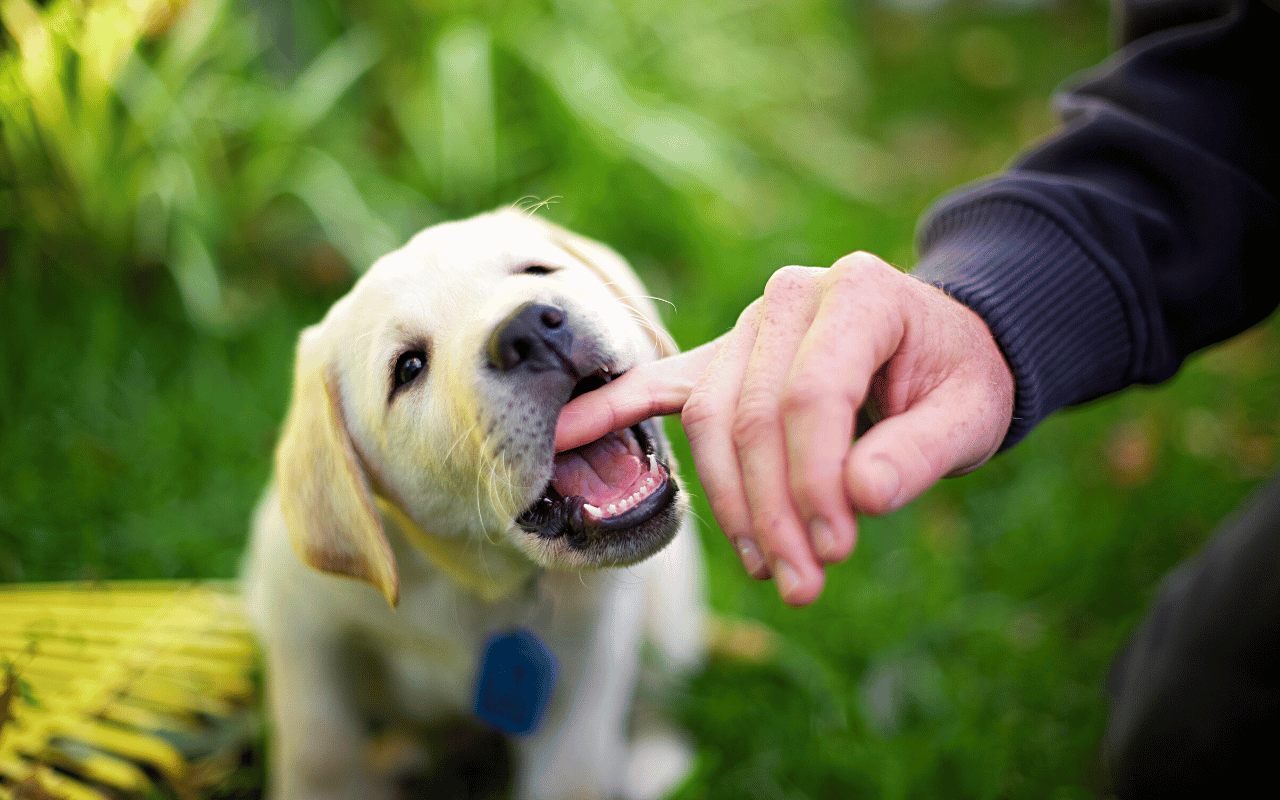How To Train A Labrador Puppy To Sit
So, you’ve just welcomed an adorable Labrador puppy into your life – how exciting! I bet you’re wondering about things like “How to train a labrador puppy to sit?” or “What’s the best way to teach them basic commands?”
Well, fear not, my friend, because I’m here to help you. Training your pup can be a fun and rewarding experience for both of you, and it’s essential for building a strong bond and ensuring they grow up well-behaved and happy.
The “sit” command is one of the first and most important commands to teach your furry companion, and it’s easier than you might think. With patience, consistency, and some tasty treats, your Labrador will sit like a pro in no time.
Therefore, let’s get started on this wonderful dog training journey together! 🐾
Reasons Why You Should Train a Labrador Puppy To Sit
I’m sharing why training your Labrador puppy to sit is a great idea. Trust me; you’ll thank yourself later for taking the time to teach this essential basic command.
🐾 Safety First
When your pup knows how to sit on command, you can prevent them from entering potentially dangerous situations. Imagine being able to stop them from darting into a busy street or approaching an aggressive dog – that’s priceless!
🐾 Better control and obedience
A well-trained dog responding to “sit” is much easier to manage in various situations. You’ll feel more at ease when visitors come over or when you encounter other dogs during walks at the dog park.
🐾 Bonding time
A Labrador puppy training is an amazing way to strengthen the bond between you two. It’s all about clear communication and positive reinforcement, which helps build trust and understanding.
🐾 Leadership matters
Teaching your pup to sit helps establish your role as the pack leader. This hierarchy is essential for preventing behavioral issues down the line.
🐾 The sky’s the limit
Once your furry friend masters the “sit” command, it opens up a world of possibilities for teaching them more advanced tricks and commands. It’s the perfect foundation for future training.
🐾 Social butterfly
A Lab puppy that knows how to sit is likely to be more comfortable and well-behaved around other dogs and people. Social interactions become enjoyable and stress-free for both of you.
🐾 Keep their minds sharp
Training your Labrador Retriever puppy to sit provides mental stimulation and challenges them to think and learn. This helps prevent boredom and promotes overall happiness.
🐾 Grooming and vet visits made easy
A dog that reliably sits on command is easier to groom and handle during vet check-ups. It makes these necessary tasks less of a hassle for everyone involved.
🐾 Leash manners on point
Teaching your pup to sit can also improve their leash manners, ensuring they don’t pull or lunge during walks. Your neighbors will be impressed!
🐾 Good behavior all around
A well-trained dog that knows how to sit is generally better-behaved and more enjoyable. You’ll reduce the chances of destructive behaviors or other issues, making life with your pup even more delightful.
Understanding Labrador Puppy Behavior
Before we dive into teaching them all those cool commands, it’s important to understand your pup’s unique behavior and personality. After all, knowing what makes your furry friend tick will help you tailor your training approach to their specific needs, making the whole process much smoother and more enjoyable for both of you.
Labradors are known for being friendly, intelligent, and eager to please, making them great candidates for training. But remember that every dog is different, so take time to observe your puppy and learn their quirks, energy levels, and preferences. Do they love playing with toys, or are they more motivated by treats? Do they have a short attention span, or can they stay focused longer?
It’s also essential to remember that Labradors are still puppies, which means they’re naturally curious, playful, and sometimes easily distracted. So, be prepared to practice patience and consistency during your training sessions.
Preparing For Training
Now that you better understand your pup’s behavior, let’s ensure you have all the necessary tools. Trust me, having everything in place beforehand will make the whole process much smoother and more enjoyable for you and your pup.
🦮 Choosing the Right Environment
First things first, let’s find the perfect spot for training. You’ll want a quiet, distraction-free area where your Lab can focus on learning. If you have the space, an indoor room works great, especially for young puppies who might be overwhelmed by the great outdoors. As they gain confidence, you can gradually transition to outdoor training. Just ensure it’s a secure, enclosed area so your pup stays safe while they learn.
🦮 Gathering Necessary Training Tools
Next, let’s gather all the goodies you’ll need for your training sessions. Here’s a quick checklist:
Treats: Get some small, yummy treats that your Lab will love. Make sure they’re easy to chew and swallow so your pup doesn’t get distracted during training session.
Leash: A comfortable, lightweight leash makes teaching the “sit” command much easier. Choose one depending on your pup’s size and weight so they don’t feel restricted or uncomfortable during training.
Toys (optional): If your Lab is more toy-motivated than treat-motivated, have their favorite toy on hand as a reward.
Clicker (optional): Some people like using a clicker for training – it’s a small device that makes a clicking sound when you press it. The sound helps your dog associate their good behavior with a reward. But don’t worry if you don’t have one – you can always use verbal praise instead. But if you’re gonna use this technique, here’s a video on how to use it.
🦮 Prepare Yourself Before Training
Finally, getting yourself in the right mindset before training your Lab is essential. Remember, patience and consistency are key! Your pup may not immediately pick up on commands, and that’s okay. Stay calm, positive, and enthusiastic – your dog will feed off your energy and be more eager to learn. And don’t forget to have fun – after all; training is a fantastic way to bond with your furry best friend.
Teaching the Sit Command
Now let’s dive into the actual training process. Don’t worry, I’ll be with you every step of the way, and before you know it, your pup will be sitting like a champ.
🐕 Introducing the Command
To start, grab one of those tasty treats we talked about earlier. Hold it just above your puppy’s head, close enough that they can smell it but not close enough for them to snatch it. As you do this, clearly and calmly say, “Sit.”
Your Lab pup will naturally want to follow the treat with their gaze, which should cause them to sit down. If they don’t sit right away, be patient and give them a moment to figure it out.
🐕 Rewarding the Behavior
As soon as your Lab sits, it’s time to celebrate! Give them the treat immediately so they associate sitting with a reward. If you’re using a clicker, click it at the exact moment they sit, followed by the treat. And don’t forget to praise your puppy verbally with a cheerful “good sit” or “well done” – they’ll love hearing your enthusiasm!
🐕 Repeating the Process
Consistency is crucial for successful training, so be prepared to practice the “sit” command regularly. Start with short sessions (5-10 minutes) a few times a day and gradually increase the difficulty by adding distractions, distance, or duration. Remember, practice makes perfect!
🐕 Troubleshooting Common Issues
Like any learning process, you might encounter a few hiccups along the way. Here are some tips to help you out:
- Puppy not sitting: If your Lab doesn’t sit after a few attempts, try luring them into position by slowly moving the treat over its head and towards its tail. Be patient and give them time to catch on.
- Puppy jumping or mouthing: If your pup starts jumping or mouthing for the treat, calmly remove it from their sight and wait for them to settle down. Only present the treat again when they’re calm and focused.
Reinforcing the “Sit” Command
Now that your pup knows what to do, it’s time to reinforce the command and make sure it sticks. Here are some recommendations on how to take your “sit” training to the next level:
🦮 Practicing in Different Environments
Start by practicing the “sit” command in various locations – both indoors and outdoors. This will help your Labrador generalize the command, so they’ll know to sit no matter where you are. Try practicing in your living room, backyard, or even the park (just ensure it’s a secure, enclosed area). The more varied the environments, the better!
🦮 Incorporating “sit” Into Daily Routines
Make the “sit” command a part of your Lab’s everyday life. For example, ask them to sit before mealtime, go out for walks, or get a treat. This reinforces the command and teaches your pup good manners and impulse control.
🦮 Using the Command in Real-Life Situations
Finally, don’t be afraid to use your Lab’s new skill in real-life scenarios. For instance, if you’re at the park and another dog approaches, ask your pup to sit and stay calm. Or, if you’re about to cross a busy street, have them sit before proceeding. This helps your Lab understand the practical applications of the command and reinforces its importance.
Advanced Obedience Training Techniques
Now that your pup has mastered the “sit” command, it’s time to level up and explore some advanced training techniques. Are you ready? Let’s do this!
🐶 Teaching a “Stay” Command After Mastering “Sit”
Once your Lab is confident with sitting on command, it’s a great idea to introduce the “stay” command. This will teach your pup to remain in place until you give them a release cue (e.g., “okay” or “free“). Start by asking your Lab to sit, then take a step back, saying “stay” as you do. If your pup remains seated, reward them. This command is useful for keeping your Lab safe and well-behaved in various situations.
🐶 Combining “Sit” With Other Commands (e.g., “Come,” “Down”)
As your Labrador becomes more adept at following commands, you can combine “sit” with other cues to create more complex and useful behaviors. Here are a couple of ideas:
- “Come” and “sit”: Teach your Lab to come to you and then sit down. This is great for reinforcing recall and ensuring your dog approaches you in a controlled manner. Start by asking your pup to “come.” When they reach you, give the “sit” command. Reward and praise them for their success.
- “Down” from a sit: Another useful skill is teaching your dog to lie down from a seated position. Ask your Lab to sit and then hold a treat close to their nose, slowly moving it towards the ground while giving the “down” command. As your pup follows the treat and lies down, reward them with praise and the small treat. This command helps settle your dog in various situations, like when you’re at a café or visiting friends.
Remember, the key to successful advanced training is maintaining the patience, consistency, and enthusiasm you’ve shown so far.
Mistakes You Should Avoid When Training Your Labrador Retriever
Training your Labrador can be a fun and rewarding experience, but it’s also important to be aware of common mistakes that could hinder your progress. Don’t worry, though – I’ve got your back! Here’s a list of mistakes you should avoid when training your Lab, so you both can enjoy a successful and positive journey together:
❎ Inconsistency
Make sure you’re consistent with your commands, rewards, and expectations. Stick to the same cues and always reward good behavior. Inconsistent training can confuse your pup and slow down its progress.
❎ Impatience
Remember, your Labrador is learning something new, which takes time! Be patient and give them a chance to understand what you’re asking. If you get frustrated, take a break and try again later.
❎ Negative reinforcement
Focus on positive reinforcement, like treats and praise, rather than punishment. Negative reinforcement can lead to fear and anxiety, hindering your dog’s learning process.
❎ Skipping socialization
Socializing your Lab with other dogs, people, and environments is crucial for their development. Make sure you expose them to various situations early to help them become well-rounded and confident.
❎ Not setting boundaries
Establishing clear boundaries and rules for your dog is essential. This helps them understand what’s expected of them and prevents unwanted behaviors.
❎ Rushing through training
Take your time and progress at a comfortable pace for both you and your Lab. Rushing through training can lead to confusion and make it harder for your pup to grasp new concepts.
❎ Inadequate exercise
Labradors are energetic dogs that need plenty of physical activity. Ensure you provide enough exercise to keep them happy and healthy, making them more focused during training sessions.
❎ Ignoring bad behavior
Don’t let bad behavior slide. Address it immediately and redirect your dog to more appropriate action. Ignoring undesirable behaviors can lead to them becoming ingrained habits.
By avoiding these common mistakes, you’ll set the stage for a successful and enjoyable training experience with your Labrador. Keep up the great work, and remember to always have fun during your Labrador training sessions – after all, that’s what it’s all about! 🐾😊
Frequently Asked Questions
Q: Is crate training necessary for Labradors?
A: Crate training can be helpful for Labradors, as it gives them a safe space to relax and provides a way to keep them out of trouble when you’re not around. However, it’s important to remember that crate training should never be used as a punishment; instead, make the crate an inviting and comfortable place for your pup.
Q: When do I need to call professional dog trainers?
A: If you’re having difficulty teaching your Labrador basic commands or demonstrating consistent progress in advanced training, it may be time to call a professional dog trainer. They can provide personalized guidance and assistance with more complex behaviors that require professional expertise.
Q: At what age do I need to potty train my Labrador?
Generally, most experts agree that between 12 and 16 weeks is the best time to start potty training your furry friend. This is when they have better control over their bladder and bowel movements, and they’re also starting to understand simple commands. However, remember that some puppies may take longer to catch on or have setbacks along the way. With patience and consistency, your Lab should soon understand where they’re expected to go for bathroom breaks.
Q: How does clicker training work?
A: Clicker training is a method of positive reinforcement where you use a sound (a “click”) to mark the exact moment your dog does something right. When they hear the click, they know their behavior is correct and will be rewarded. The clicker allows for more precise timing than verbal cues, which can help your pup learn more quickly.
Q: Is it hard to train an adult dog?
A: Training an adult dog can be a bit more of a challenge, but it’s not impossible. The key is to remember that every dog is different and has their own personality and learning style. Some adult dogs may have already learned bad habits or behaviors that will take time and patience, while others may have had no training. It’s important to start with the basics and be consistent in your approach. Positive reinforcement is always a good method, and remember to keep training sessions short and fun for you and your furry friend. With time and effort, your adult dog can learn new tricks and behaviors and become a well-behaved and obedient companion.
Final Words
Teaching your Labrador puppy to sit is a fantastic starting point for their training journey. Remember, patience, consistency, and a positive attitude are key to helping your pup master this basic command. As someone who’s seen the incredible bond that forms between dogs and their humans through training, I can’t wait for you to experience the joy and pride of watching your Lab grow and learn.
Keep up the amazing work; soon enough, your furry friend will sit like a pro! Enjoy every moment of this exciting adventure with your pup – you’re creating memories that will last a lifetime. 🐾

